#stjPROGRESS
The St. John Community Foundation and its’ Long Term Recovery Teams (stjAngels) are working in collaboration with local and national emergency support partners to strengthen and bring resiliency to St. John by focusing on five key areas, Health, Youth, Environment, Arts, and Community Development.
Online Donation
The St. John Community Foundation has successfully been carrying out the mission of providing services and supporting programs that positively engage people, build resources and strengthen the St. John community since 1989.
We continuously look for ways to fill service gaps and cultivate community assets including people, organizations, programs, and resources to effectively respond to changing needs of the community now and for future generations.
The St. John Community Foundation was formed just after the devastation that hurricane Hugo inflicted on St. John. Back in 1989, few community groups existed on St. John that had the capacity to help an entire community recover from the massive destruction caused by Hugo. Through community commitment toward a common goal, the St. John Community Foundation was born.
The St. John Community Foundation has historically focused on 6 Community Impact Areas. Due to the community need with post hurricane recovery - these impact areas were further developed into 10 Long Term Recovery Teams (stjAngels). Our 6 Impact Areas support the recovery relief efforts of the Long Term Recovery Teams and stjAngels in working with FEMA's Community Plan and St. John's long term recovery.
To make an offline donation or pledge please send your support to:
Donations
c/o The St. John Community Foundation
PO Box 1020
St. John, VI 00831
In difficult times like these every little bit helps support our island community. We are determined to help build a bigger and better St. John.
The STJ Angels - Long Term Recovery Team (LTRT), an initiative of the St. John Community Foundation (EIN 66-0463145).
Email: donations@sjcf.org Phone: 340 693-9410

The STJ Angels - Long Term Recovery Team (LTRT), an initiative of the St. John Community Foundation (EIN 66-0463145), unites disaster recovery resources with community needs to ensure that even the most vulnerable community members recover from the most recent hurricanes while establishing systems for resiliency and preparedness for all-hazard events
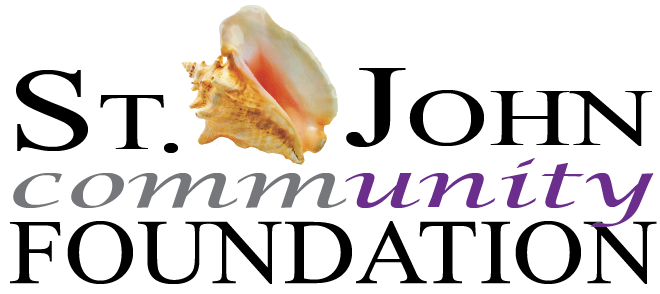
Community Impact Areas
Youth Development
Youth Development
The Long Term Recovery Team’s Youth Work Group, called SJTYO, has a broad vision of all children on St. John connected to a supportive community that helps them grow to their full potential and to become powerful mentors, well poised to nurture the next generation.
How to helpHealth & Human Services
Health & Human Services
Our vision is to sustain and improve the health, wellness and design of the St. John community in collaboration with healthcare partners to ensure affordable and accessible comprehensive care for all residents of and visitors to our island.
How to helpEnvironmental & Animal Wellfare
Environment & Animal Welfare
Our vision that within the next 20 years, the community of St. John will have renewable energy resources, and a solid waste management system that is efficient and effective. They believe it is possible that all residents and visitors to our island will have access to clean water for consumption and recreation, and that the stewards of the territory will have a realistic method and cultural habit of natural resource protection.
How to helpHousing Recovery
Community Development & Planning
Community & Infrastructure
Together we will help assure that all implementation of public infrastructure during recovery on St. John has community involvement in planning, meets St. John’s needs comprehensively, and is more resilient. Work group focus areas are community centers/public spaces, roads and transportation, communications, and all-hazards planning. Also provides support & tools to the community planning process.
How to helpArts & Culture
Arts & Culture
The Arts & Culture Work Group of St. John’s Long Term Recovery Team is dedicated to its mission of creating synergy between arts and cultural groups in order to connect St. John residents and visitors to resources and opportunities that foster appreciation of art and artistic growth.
How to help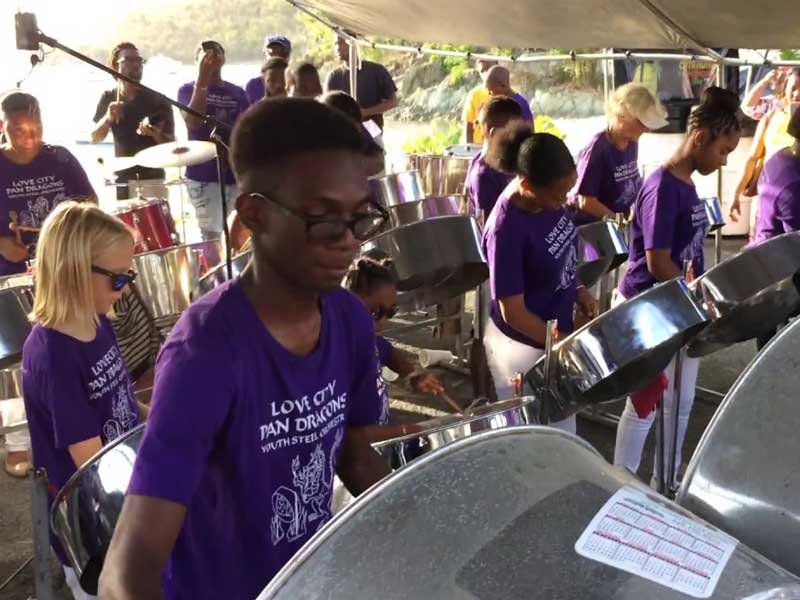
Youth Development
The Long Term Recovery Team’s Youth Work Group, called SJTYO, has a broad vision of all children on St. John connected to a supportive community that helps them grow to their full potential and to become powerful mentors, well poised to nurture the next generation.
The mission is to facilitate collaborations among community stakeholders, and combine skills and resources to enhance the potential of our island’s children while ensuring they have a place to go for recreational activities, vocational training, and academic support.
STJYO formed to improve and expand upon current youth programs, and to support all territorial schools and homeschool programs in meeting the educational and extracurricular needs of kids of all ages. Other community actions to support education include addressing the challenges of access to early childhood education and child care.
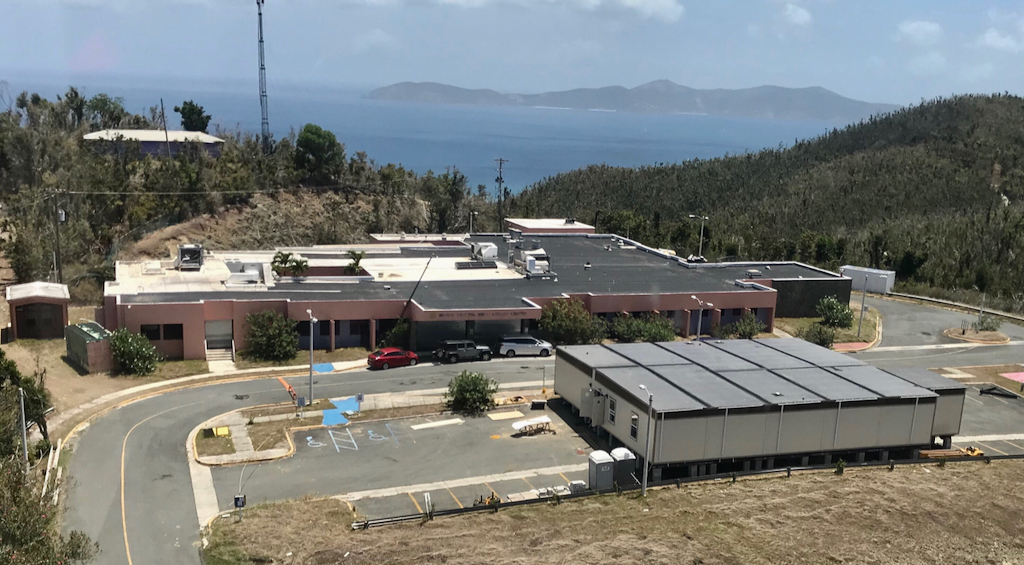
Health & Well Being
The Long Term Recovery Team’s Health and Wellness Work Group has a vision to sustain and improve the health, wellness and design of the St. John community in collaboration with healthcare partners to ensure affordable and accessible comprehensive care for all residents of and visitors to our island.
Our collective mission is to promote, health, self-sufficiency, and an improved quality of life for all members of the St. John community by partnering with service providers, educators and additional sources that support a wide range of high quality preventive intervention and protective services in response to public health and basic human service needs.
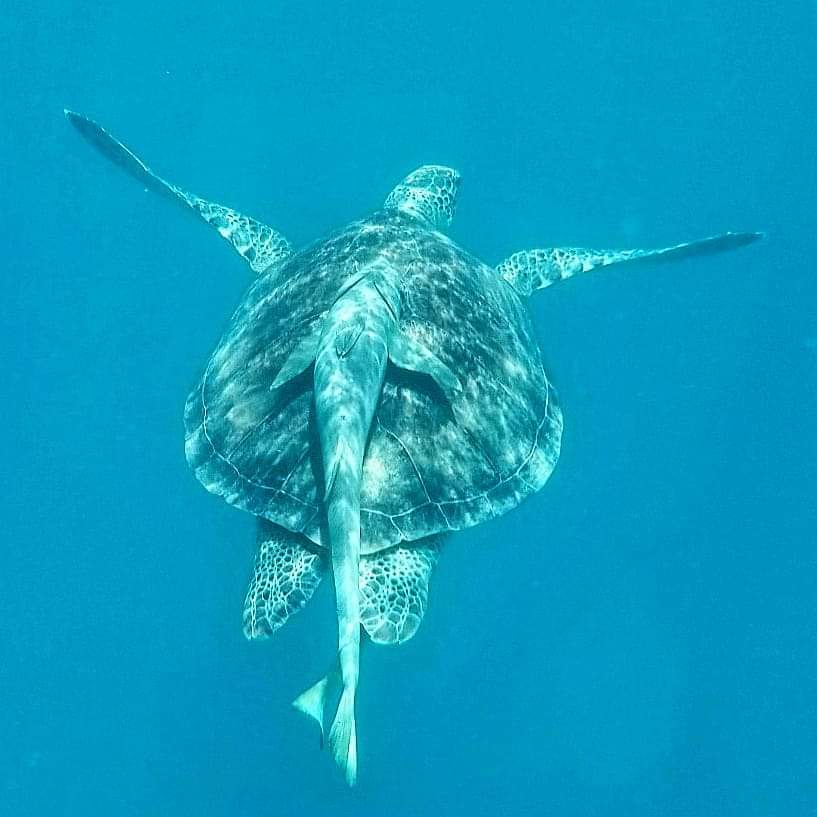
Environment & Animal Wellness
The Long Term Recovery Team’s Environmental Sustainability Work Group has a vision that within the next 20 years, the community of St. John will have renewable energy resources, and a solid waste management system that is efficient and effective. They believe it is possible that all residents and visitors to our island will have access to clean water for consumption and recreation, and that the stewards of the territory will have a realistic method and cultural habit of natural resource protection.
PROTECT NATURAL RESOURCE INCLUDING FLORA & FAUNA: Extreme hurricane damage to the beaches, mangroves and upland forest of St. John has reshaped the landscape. St. John is home to one of the best preserved tropical dry forests, largely due to its protection as part of the Virgin Islands National Park (VINP). The damage to coral reefs and forests have put additional strain on endangered species, including plants and animals. Additional programs to protect the island’s natural resources while enhancing cultural connectivity are needed.
DEVELOP RECYCLING PROGRAMS & IMPROVE SOLID WASTE MANAGEMENT: St. John capital improvement funds currently pay for waste hauling by trucks on barges to Bovoni Landfill on St. Thomas, which is beyond capacity and under a Federal Consent Decree to close further increasing urgency to overhaul and redesign the current waste management system. Ninety-eight percent of survey respondents said they supported recycling and would participate in a recycling program.
This project seeks to divert and reduce solid waste volume at landfill sites, expand the local economy, improve island aesthetics and reduce pollution sources. Over the past 20 years, small-scale recycling and source separation efforts have been embraced but have not had the opportunity to develop into a larger, more resilient recycling system. Significant barriers exist, including the cost of transportation off island to recycling facilities, the cost of establishing and running the recycling programs and limited markets or recycling uses.
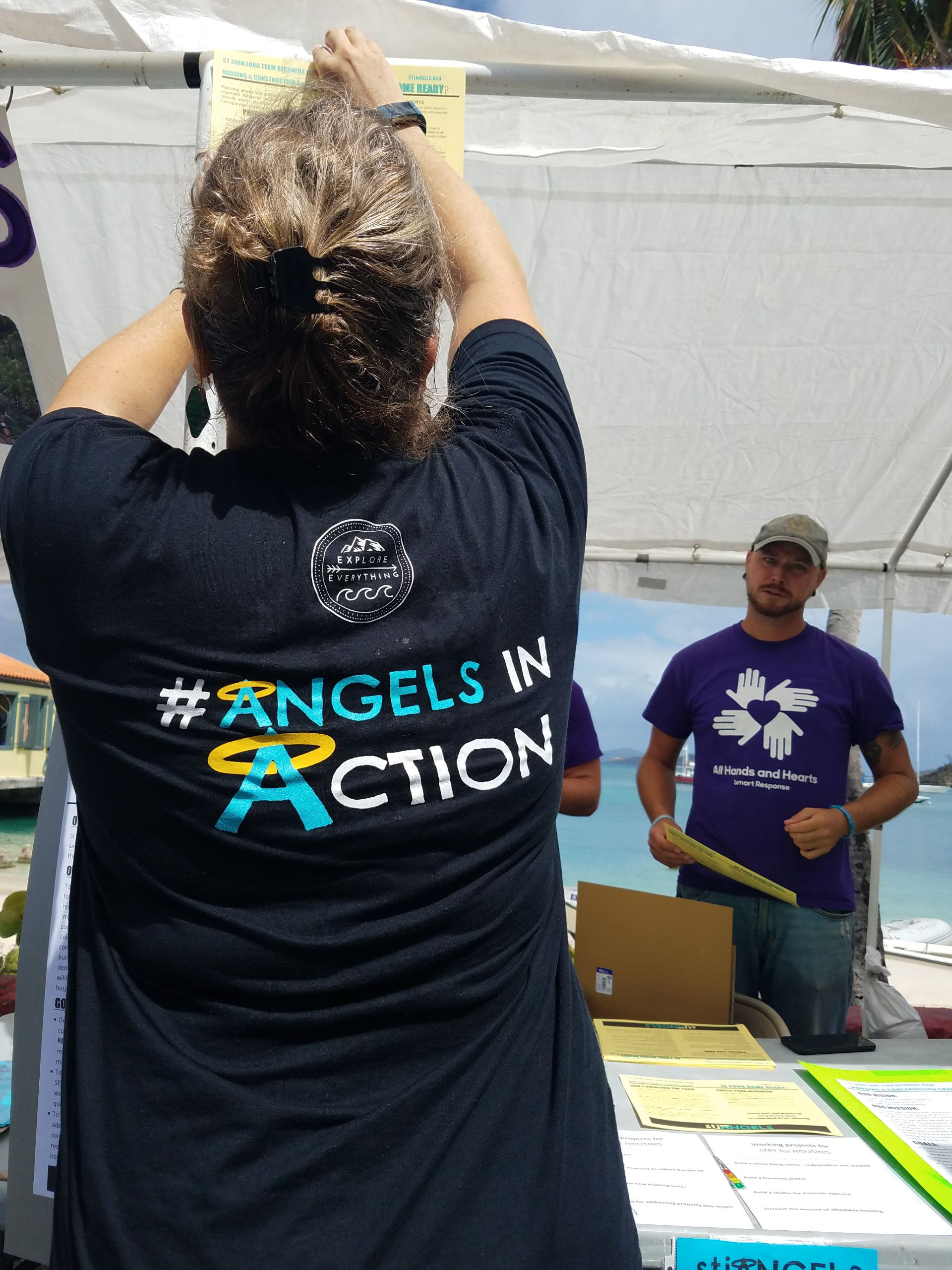
Housing Programs
The storms left behind incredible devastation to St. John’s housing. The ordinarily arduous task of rebuilding is additionally challenging due to limited contractors, difficulties obtaining building supplies, and delays with insurance and storm reimbursement programs. Nearly a year later, many families are still living in storm damaged homes, including structures in need of roof repairs.
Through the Resilient Housing Initiative (RHI) and over the next 1 to 3 years the stjAngels with many key community partners, including Love City Strong, Blue Bay Construction and All Hands & Hearts will come together to combine resources and skill sets in an effort to streamline project management and rebuilds for those most in need.
RHI focuses on helping St. John’s most vulnerable residents return to stable living situations. These construction projects will ensure that components of their homes are rebuilt in a manner that is more disaster resistant than their pre-storm living conditions.
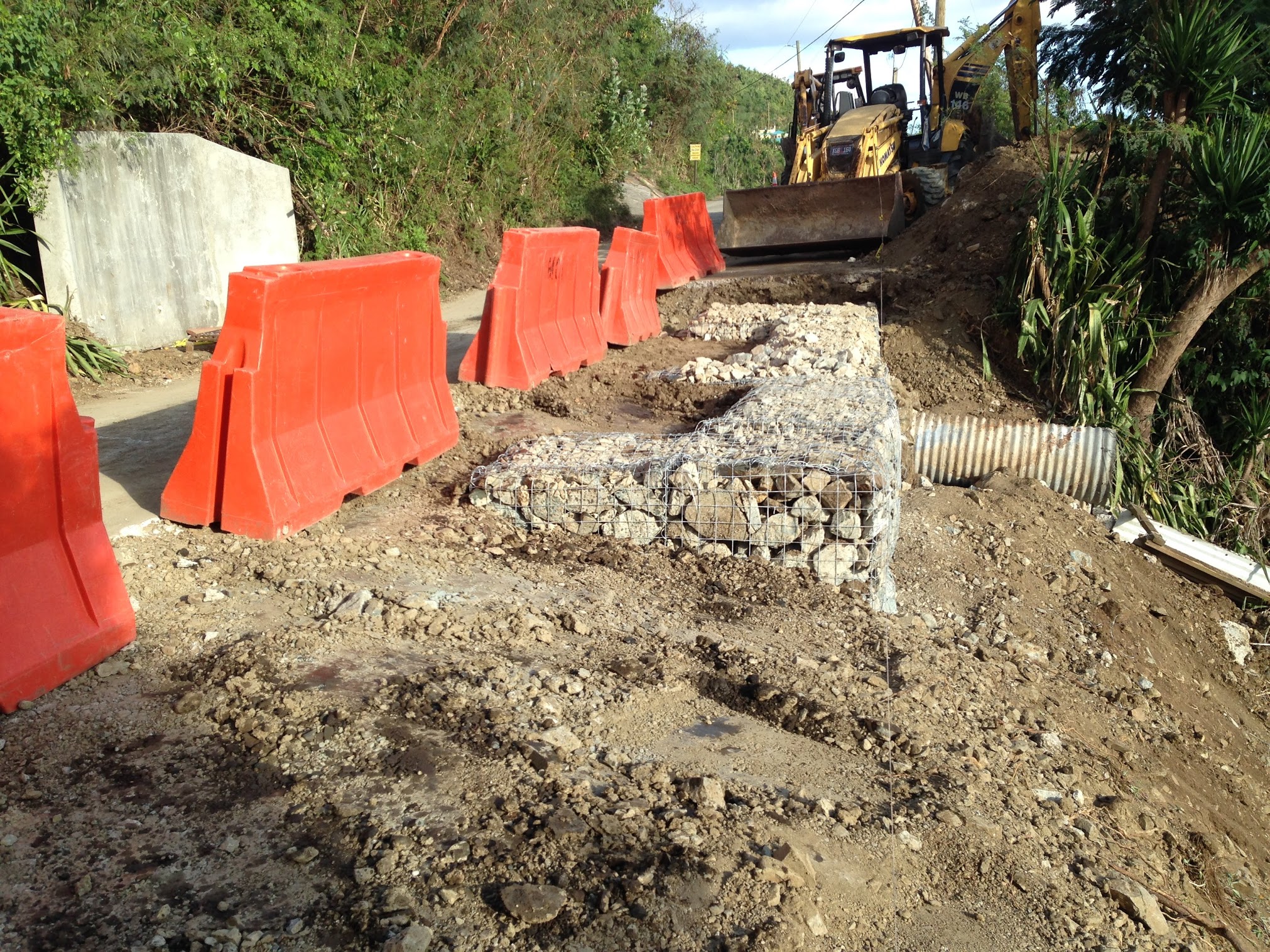
Community Development & Planning
Community Planning and Infrastructure Work Group plans to help assure that all implementation of public infrastructure during recovery on St. John has community involvement in planning, meets St. John’s needs comprehensively, and is more resilient. Work group focus areas are community centers/public spaces, roads and transportation, communications, and all-hazards planning. Also provides support & tools to the community planning process.
Community Development projects include design elements in Cruz Bay and Coral Bay for improved walkability and public spaces. A Comprehensive Plan for the Virgin Islands was completed by the Department of Planning and Natural Resources (DPNR) in the 90’s but has not been accepted by the legislature or the public. The zoning code, which was adopted in the 70’s, has only received minor updates. Land-use planning is an integral component of any attempt to either change or preserve a community’s aesthetic or functional character, however there are no permanent planning staff assigned to St. John.
Economic Development Work Group projects support the coordination efforts to sustain and/or rebuild businesses and employment opportunities. The majority of businesses on St. John are small businesses which have a tendency to be more vulnerable to environmental and economic changes. Operating a small business can already be a struggle in a relatively stable environment, and the impact of the storms only served to intensify the inherent difficulties of small business ownership and management. The development of a Business Alliance will support local businesses, enhance economic and workforce development opportunities to lead to a more sustainable and economically resilient community.
In order to achieve a wholly sustainable and resilient community, special attention needs to be paid to our vulnerable populations including seniors, women and children, victims of domestic
violence, and those who are in transition and have no housing safety net on St. John. There are currently no temporary, transitional or permanent housing options for displaced, vulnerable individuals on St. John. In an outreach effort to prioritize the projects that have been identified, shelters ranked third highest priority.n.
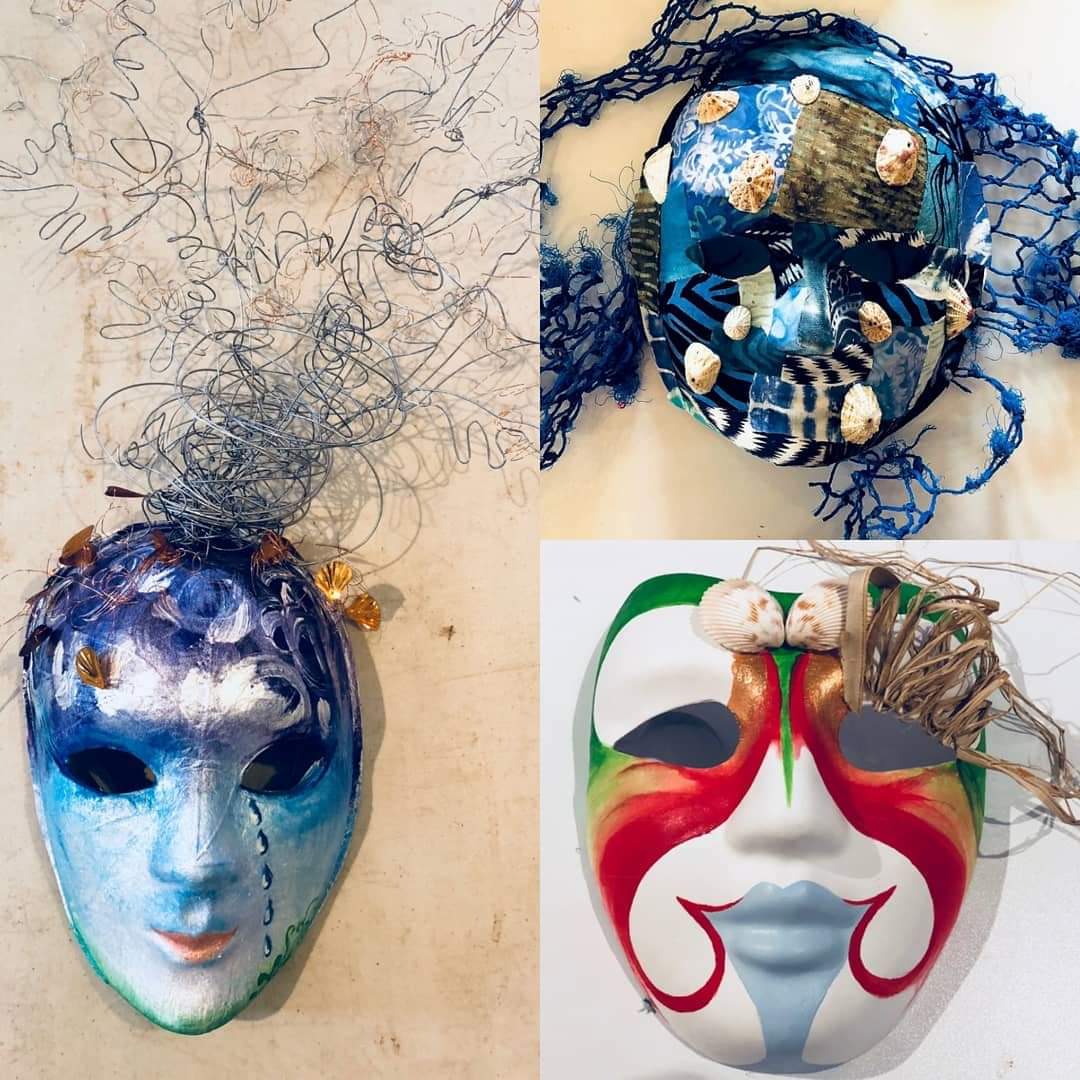
Arts & Culture
The Arts & Culture Work Group of St. John’s Long Term Recovery Team is dedicated to its mission of creating synergy between arts and cultural groups in order to connect St. John residents and visitors to resources and opportunities that foster appreciation of art and artistic growth.
Our leaders of the arts movement on St. John embody the belief that the arts hold trans-formative potential, and strive to ensure access to the arts for all ages by encouraging a community passion for the arts, and successfully supporting, partnering, and collaborating with others committed to the arts.
The goals of this project of expanding the the arts on St. John, and for local artists, can be accomplished by partnering with various community groups, schools, local businesses and other charitable organizations to provide quality programming and educational opportunities, while promoting artists, arts organizations, and guiding advancement of the arts.

